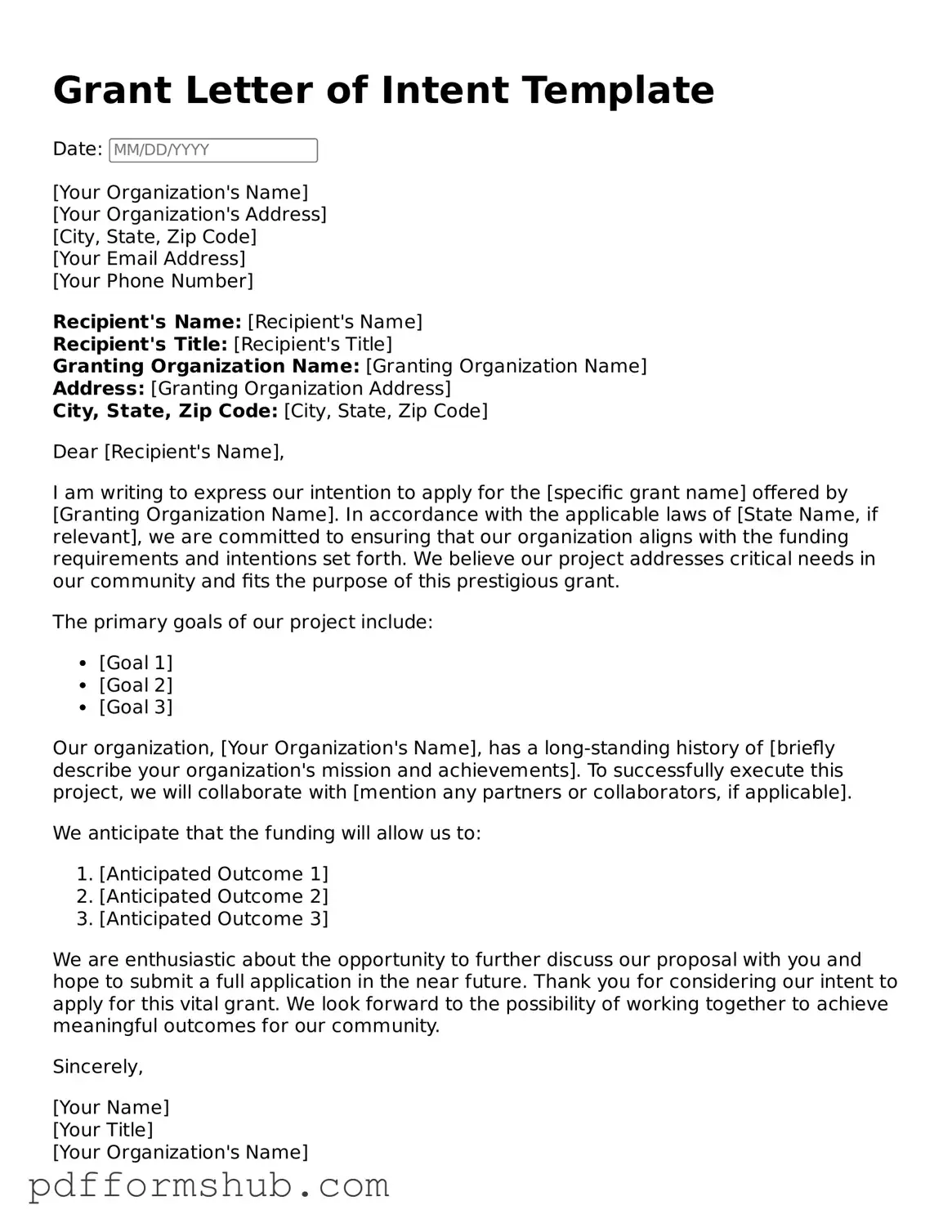When seeking funding for a project or initiative, a Grant Letter of Intent (LOI) serves as a crucial first step in the application process. This document expresses your intention to apply for a grant and outlines the key elements of your proposed project. Typically, it includes essential information such as the project's title, objectives, and a brief description of the intended impact. Additionally, the LOI often requires details about the organization seeking funding, including its mission and relevant experience. By submitting this form, you not only demonstrate your commitment to the project but also provide grantors with a snapshot of your proposal. This initial communication can pave the way for a more detailed application, making it an important tool for securing financial support. Understanding the components and purpose of the Grant Letter of Intent is vital for anyone looking to navigate the grant application landscape effectively.
